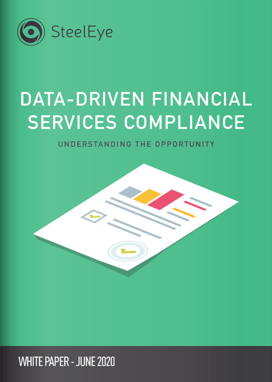
Compliance teams continue to face unprecedented pressure to respond with agility to the changing operational circumstances created by the Covid-19 pandemic. One particular area where teams have faced significant challenges is in detecting and preventing market abuse, when markets are swinging wildly and employees are working from home.
The UK FCA has made it clear it expects firms to still be capable of detecting market abuse under these circumstances. For example, in its May 2020 Market Watch newsletter the regulator wrote, “We are aware that increased market volumes and volatility have caused a surge in the number of surveillance alerts in a number of markets. We understand that firms are handling this challenge in different ways. Firms should ensure that their approach is tailored to the risks they are exposed to and does not diminish the appropriateness and effectiveness of their surveillance.” The US Securities and Exchange Commission has also spoken out about market integrity issues.
But despite this persistence from the regulators, financial firms are facing significant challenges in meeting their market abuse compliance requirements. These challenges include: soaring alert volumes due to market activity, selecting the right algorithms, effectively monitoring communications and calibrating algorithms correctly.
1. Soaring alert volumes due to market activity

With the markets gyrating wildly in February and March, some trade surveillance software programs sent out thousands of false positive alerts to compliance teams. In March 2020, the average daily trading volumes across exchanges in Europe jumped to €69bn – a 60% year-on-year increase, according to Cboe Europe data. Volatility also soared. The Vix index of equity-market volatility hit a record high of more than 80 in mid-March. Although by mid-June it was down to 32, this was still above its long-term average of 20. These unprecedented patterns of trading activity and volatility can lead to trade surveillance monitoring complications. For compliance teams, this is a nightmare, because it’s almost impossible to modify these percentage benchmarks in a way that reduces the volume of alerts but is still sensitive enough to capture signs of market abuse.
Some firms have seen the number of market abuse alerts rising to five or six times their normal levels. These problematic alert volumes happen because the software programs often rely on percentage benchmarks to trigger alerts. For example, if a trader completes a large purchase of EasyJet shares, and then the price jumps 30%, a simple percentage-based algorithm might fire off an alert. However, an algorithm that looks at a basket of aviation stocks, news feeds, or broader indices such as the FTSE 100 would be able to ascertain that all aviation equities saw a price spike, or that the market as a whole moved that say because of a piece of economic data that was released. So, the algorithm would not fire an alert, saving the compliance team from having to investigate a false positive.
The teams also have a constant stream of alerts that they have to investigate, significantly increasing workload.

2. Selecting the right algorithms

Compliance teams are required to track specific market abuse behaviours and activities relevant to their business and trading operations using Market Abuse Regulation-focused algorithms. However, finding out which algorithms are required/applicable can be difficult, even though using correct algorithms is key to ensuring compliance teams are able to flag instances of financial crime or market manipulation. It can also be difficult for firms to know whether they are monitoring for the correct behaviours, overstepping, or falling short in their trade surveillance endeavours. It is therefore surprising that regulators, like the UK FCA, do not provide more best practice guidance on the types of algorithms that firms should be using depending on their business, and how the algorithms should work.
Detection of different kinds of market abuse require algorithms tailored to the task. Uncovering improper order handling – the possession of material non-public information (MNPI), and then executing on that information with an intent of gaining advantage – needs algorithms designed to find following/tailgating, front-running, inappropriate allocations, preceding, and price outliers. These algorithms bring together and analyse data such as market data, news, client identifiers, order timestamps, cancelled orders, and execution venue information.
In short, algorithms should be able to analyse specific transactions within a much wider context, to lower the number of false positives. This approach helps compliance teams use resources more efficiently, by reducing the number of investigations needed and increasing the intelligence the teams have for the investigations they do conduct.

3. effectively Monitoring communications

In the latest Market Watch newsletter, the FCA also noted that firms must continue to track communications channels for the potential abuse of MNPI. The operating environment for businesses is evolving rapidly, with some companies expected to try and raise capital, while others will shut their doors. With financial services employees working from home, the potential for MNPI to either be used inappropriately or for it to escape “into the wild” is significant. Additionally, both firms and the regulators are worried that the rise in the use of offensive language by traders working from home might signal a more lax approach to compliance by those employees, and therefore a rise in market abuse activity.
Firms need to proactively monitor all potential employee communication channels, as well as be able to detect trading or order placement before or after significant price moves. Compliance teams performing investigations also need to be able to align trade data with communications information and other sources such as news and social media quickly and easily.

4. Calibrating algorithms correctly

While the new Market Watch newsletter encourages firms to update the calibration of their trade surveillance systems in light of the changing circumstances created by Covid-19, it provides little detail on how firms can go about doing that.
Getting the calibration right is of critical importance. But compliance teams cannot just “turn a dial” on their trade surveillance platforms to “fix” them for Covid-19 market conditions. Teams need to conduct a full review of the change, including back-testing. They also need to provide an audit trail as to why the changes were made, and what the results of the review were. Performing all of this in the heat of intense market movements, such as those seen in February and March, can be difficult for compliance teams which are already stretched.
The UK FCA is being very clear about its intention to ensure any market abuse that takes place during the Covid-19 pandemic is tracked down and tackled. One sign of the seriousness of the regulator is the new suspicious transactions and orders report (STOR) forms. Previously, firms would only fill these in for signs of market abuse within their own firms. Now, the new forms include the ability for firms to file a “market observation” – for potential market abuse activity that it is not a party to, and for which it does not have complete information.
Thanks to Covid-19, compliance teams are under more pressure than ever before to undertake market surveillance correctly. As well, current market conditions are creating a range of other challenges too, such as the news that both the CME Group and Deutsche Börse are discontinuing their regulatory reporting businesses. As a result, many compliance teams are rethinking their overall strategic approach to meeting their regulatory obligations – they are shifting away from manual or internally created approaches, and they are implementing automated and outsourced services capabilities. These RegTech solutions not only potentially lower costs, but also enable compliance teams to be more agile in the face of changing circumstances.


START YOUR DATA JOURNEY TODAY!
Adopting a data-centric approach to compliance can solve your regulatory challenges and deliver enhanced value to your organisation. Learn more in this white paper:





















